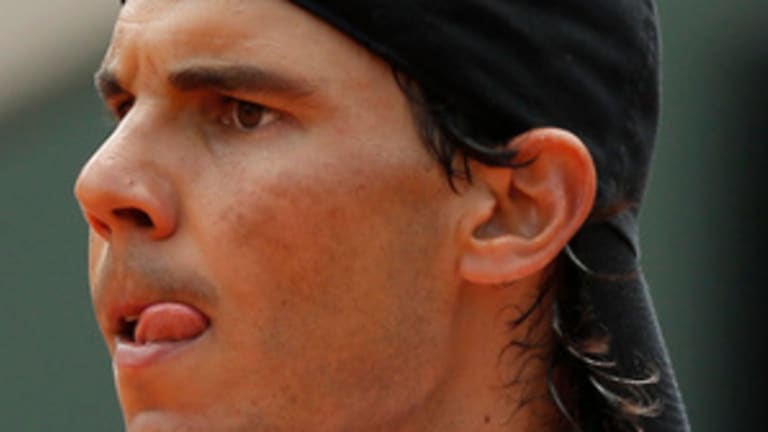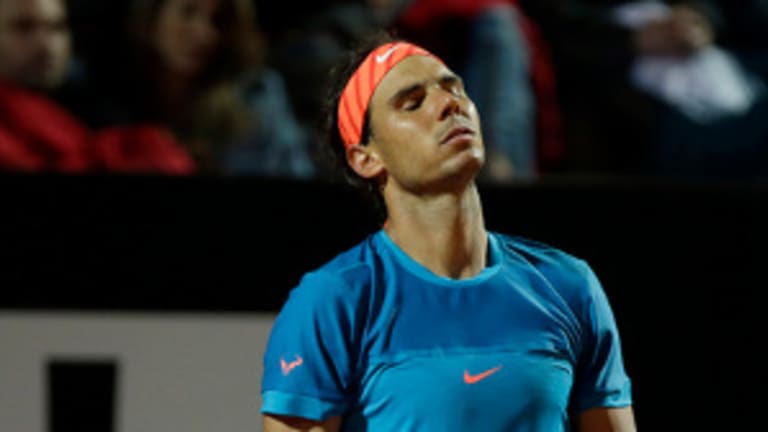Has any tennis player ever faced a challenge as complex and fundamentally bizarre as the one staring Rafael Nadal in the face right now? Has anyone ever stood gazing at a mountain that has been as familiar, friendly, and tractable, yet in what seems like an instant turned so forbidding, towering, and shrouded in mist?
What is sure to be the most riveting of Rafael Nadal’s 11 French Open campaigns begins this week. The nine-time champion is seeded a lowly No. 6, with tournament officials having decided that despite his numerous feats of derring-do in the 16th arrondissement, the Spaniard’s seeding would not be elevated.
Had Nadal’s decline been due to injury or some other act of God, those officials might have considered moving him up out of deference to his status as not just the defending champion, but the most prolific tennis player the red clay of court Philippe Chatrier has ever hosted. But a drastic loss of form is a cardinal offense in tennis. Nothing short of tanking matches is as disappointing to those watching as an inexplicable slump. Nadal is a sinner in the hands of an angry seedings committee.
I don’t want to be a cynic here, but does anyone else get the feeling that perhaps some of those French aesthetes were also getting a little bit sick of watching Nadal, with his roughneck game, sinking his teeth into their precious Coupe de Mousquetaires year after blessed year? If that was the case, things could not have worked out much better for that disgruntled contingent. For the draw has matched Nadal in the quarterfinals with his nemesis, and runaway world No. 1, Novak Djokovic.
The amazing thing about this tournament, most poignantly for Nadal himself, is that nobody can imagine him winning this year—yet nobody in his right mind can imagine him losing, either. Nadal is 66-1 at Roland Garros, has won this tournament nine of the last 10 years, and the last five years running. That means something. It suggests that Nadal just might be able to win this tournament even if Boris Becker and Severin Luthi kidnapped him and sawed his right leg off just above the knee on the night before his first match.


